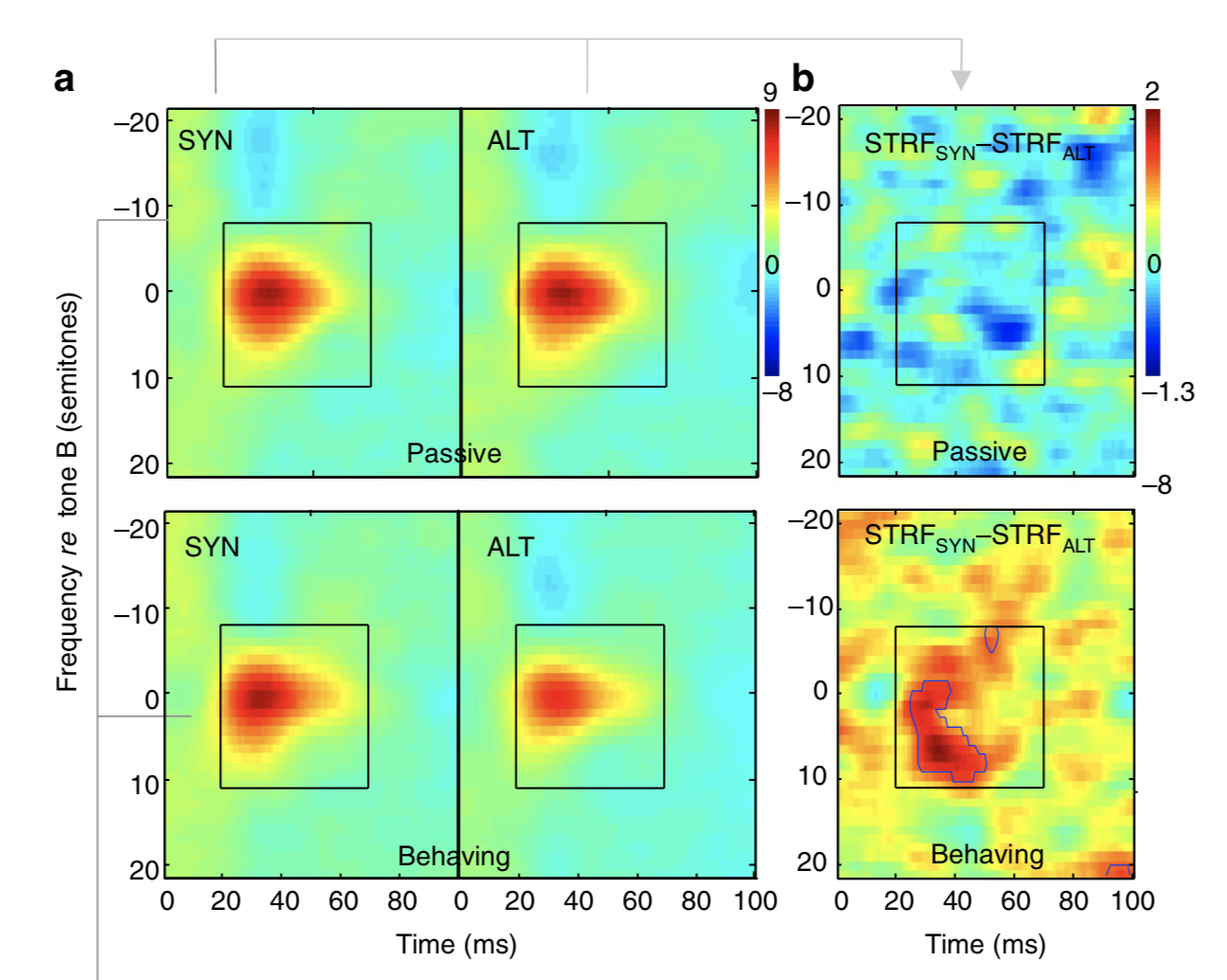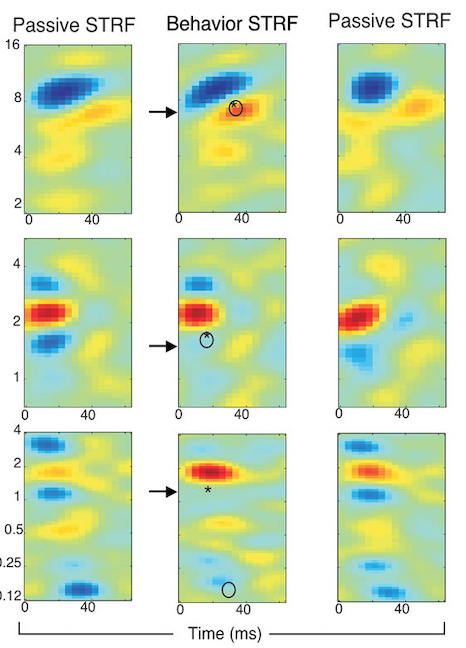Research


Rapid Task-Related Plasticity of spectrotemporal receptive fields in primary auditory cortex
The view of the cortex as a static processor of sensory information has been giving way to the notion of a malleable system that slowly adapts to a changing environment during development, injury, or stimulation. This view is now evolving again in light of recent studies in primates and ferrets that reveal nearly instantaneous changes that occur in the cortex when animals are engaged in various tasks. For instance, we have recently demonstrated that in an auditory detection task, in which a ferret is trained to detect the presence of a target tone against a background of broadband noise, STRFs undergo rapid facilitation that is often specific to the target frequency, and can be short-lived or alternatively persist for many hours, leading to long-lasting receptive field changes, a form of sensory memory. Furthermore, this rapid plasticity is absent or weak in naive animals, or in non-behaving and poorly behaving trained animals. Recent results also demonstrate that STRF changes are dependent on the exact nature of the behavioral task and target stimuli involved, but consistent with the goal of optimizing the animal performance under different conditions. The insights provided by these findings, coupled with the powerful tools developed for on-line measurements of the STRFs, provide a strong impetus for pursuing more elaborate experimental designs to explore the underlying mechanisms, computational implications, and optimality principles that govern cortical plasticity.
Rapid Task-Related Plasticity of spectrotemporal receptive fields in primary auditory cortex
The view of the cortex as a static processor of sensory information has been giving way to the notion of a malleable system that slowly adapts to a changing environment during development, injury, or stimulation. This view is now evolving again in light of recent studies in primates and ferrets that reveal nearly instantaneous changes that occur in the cortex when animals are engaged in various tasks. For instance, we have recently demonstrated that in an auditory detection task, in which a ferret is trained to detect the presence of a target tone against a background of broadband noise, STRFs undergo rapid facilitation that is often specific to the target frequency, and can be short-lived or alternatively persist for many hours, leading to long-lasting receptive field changes, a form of sensory memory. Furthermore, this rapid plasticity is absent or weak in naive animals, or in non-behaving and poorly behaving trained animals. Recent results also demonstrate that STRF changes are dependent on the exact nature of the behavioral task and target stimuli involved, but consistent with the goal of optimizing the animal performance under different conditions. The insights provided by these findings, coupled with the powerful tools developed for on-line measurements of the STRFs, provide a strong impetus for pursuing more elaborate experimental designs to explore the underlying mechanisms, computational implications, and optimality principles that govern cortical plasticity.